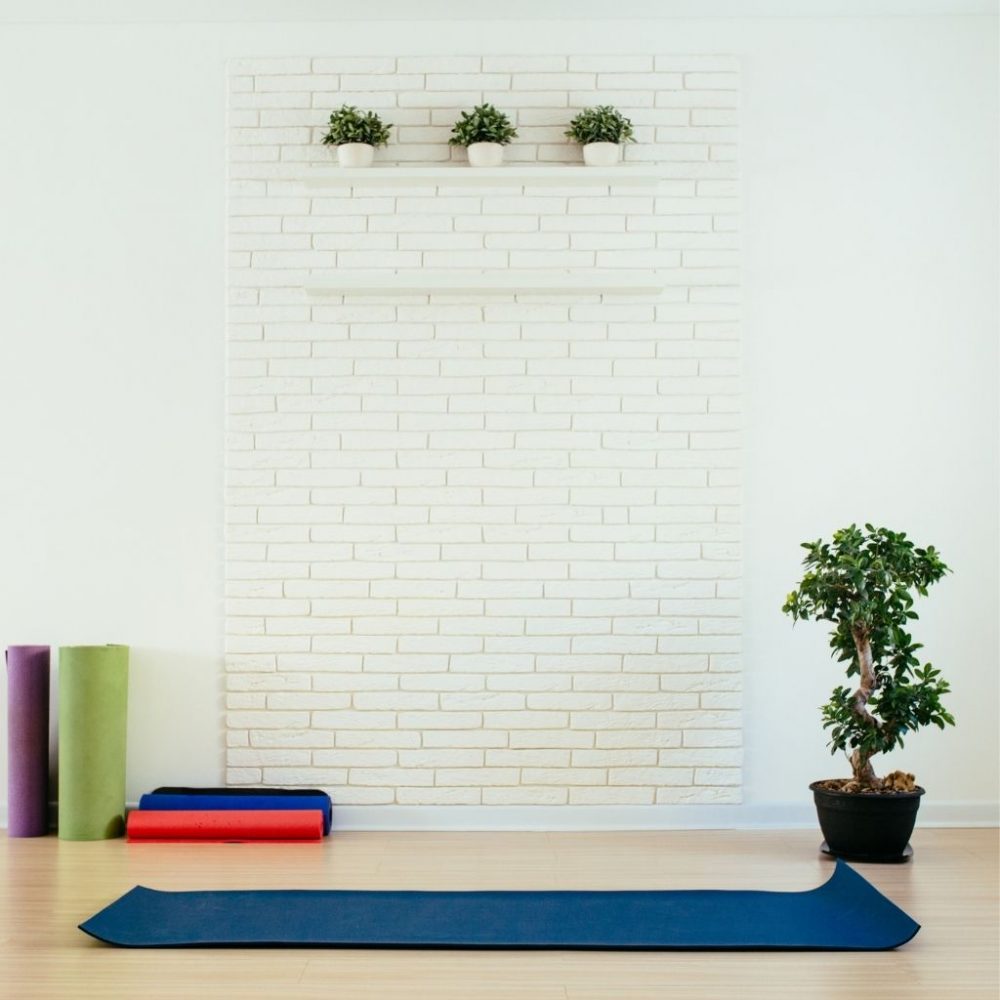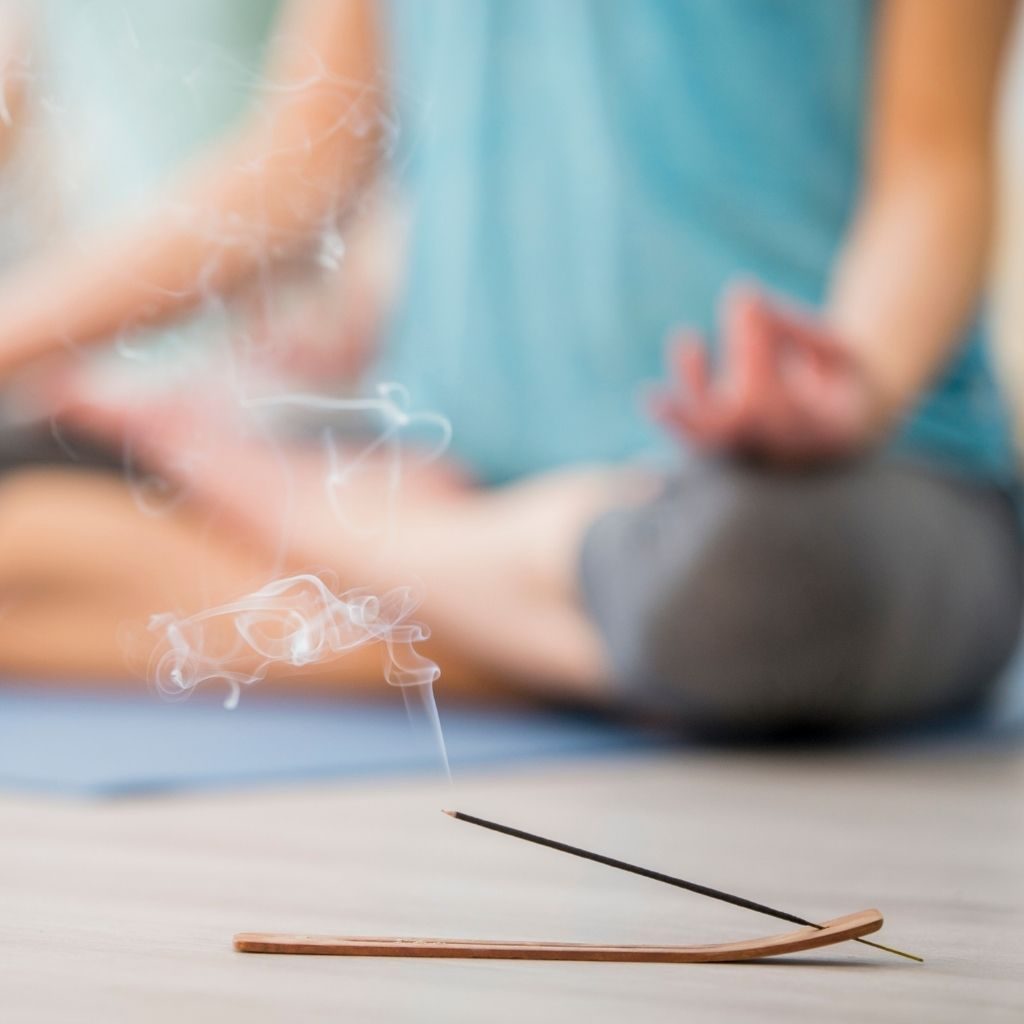Can I Do Yoga in a Closed Room? (Tips to make the most out of it)
Yoga originated in India, a hot country where structures were always designed to be well ventilated and open. Modern life entails that we practice yoga inside our closed rooms or studios. How safe is that? Can you do yoga in a closed room?

While you can do yoga in a closed room, it is advisable that there is proper air circulation. The ideal space for doing yoga is one where there is fresh air and good ventilation, like a place that is sheltered but open. A closed room with poor air circulation will impede your breath and limit the benefit you receive from your yoga practice.
In this article, we talk about everything you need to know for doing yoga in a closed room – the precautions you need to take, the things you can do to create an ambient atmosphere, and things you need to be aware of if you are doing hot yoga.
Before we go on to the tips for doing yoga in a closed room, let us first look at the importance of adequate ventilation for a yoga practice.
The importance of a well-ventilated space for doing yoga
The breath plays a vital role in yoga.
In a yoga class, many of the instructions involve breathing – breathing from the belly, staying conscious of the breath, breathing fully and deeply, moving with the breath, holding the breath, and others.
Breathing right is also essential for creating harmonious movements where inhalation aids in opening and expanding, initiating movement, and engaging the muscles.
Exhalation accompanies movements where there is stretching, lengthening, relaxing, and folding the body in on itself.
There are two major factors why a well-ventilated space is essential for yoga.
1. Accumulation of warm air
The out-breath is relatively warmer than the in-breath.
When a room is closed, and many people practice in it, especially during pranayama or breathing exercises in yoga, an excess of warm air is exhaled.
This can make you feel uncomfortable, and the air can start to feel stuffy.
Having some air circulation will ensure that the air is pure and clean.
2. Creation of dense air
While doing yoga, especially if it is the more aerobic and intense form of yoga, body heat is produced along with sweat.
This can cause the air of a closed room to become damp.
While doing yoga asanas and pranayama, the air should be light, making it easier to breathe.
Damp air is heavier and denser, which can make it challenging to breathe fully and deeply.
If there is no choice but to do yoga in a closed room, something that might be true for many of us, how do we create the right conditions?
We will share our favorite tips next.

Tips for practicing yoga in a closed room
Practicing yoga outdoors may not be a feasible option for many of us.
Climatic conditions like being too cold, too hot, wet, or windy are not suitable for practicing yoga outdoors.
It is also not advisable to practice outdoors if you live in a place where pollution levels are high.
How do you then create a practice in a closed room that is healthy and beneficial?
Here are our best tips for practicing yoga in a closed room.
If you need to create some ventilation
One of the easiest ways to create ventilation in a closed room is to open the windows. Letting the outside in will not only provide you with cleaner and more oxygenated air, but it will also feel fresher.
This will help create an energized and rejuvenating practice.
If opening the windows is not an option for you – perhaps you live in a place where the climate is not conducive, or there are no windows in the room – you can create cleaner air by using an air purifier, humidifier, or exhaust fan.
You can also place indoor plants in the room that help clean the air and bring some freshness.
If you would like to create the right ambiance
Doing yoga outdoors is doubly beneficial; while providing all the benefits of yoga practice, it also boosts mood, energizes and refreshes, and awakens your senses.
Rather than closing the room to the outside, let the room be filled with natural light whenever possible.
The early morning sun can make your sun salutations feel real.
Keep the room free of clutter and minimalistic.
This keeps away distractions and also keeps the flow of energy clear.
You can keep the colors of the walls in neutral, light, and warm tones.
If your room has air conditioning
It is all right to practice yoga in a room with air conditioning, but you need to ensure that the room does not get too cold.
Cold temperatures can make the body stiff, making it challenging to do yoga and increasing the risk of injury.
If the room is cold, make sure you warm up adequately before starting your yoga practice.
Air conditioning can also make the air inside a closed room dry, making the nostrils and throat feel sore after your practice.
To prevent this from happening, you can either use a humidifier, keep the temperature closer to the outside temperature, or practice at a time when it is not as hot, like early mornings.
You may also like: Why Am I Sore After Yin Yoga Practice? (Answered!)
If you would like to burn incense
It is advisable to burn incense sticks only in spaces that are well ventilated.
Incense sticks release smoke, which you will end up inhaling if you are practicing yoga in a closed room.
Also, if the incense is not all-natural, there is a likelihood of there being chemicals that can be harmful if inhaled.
While doing yoga, you are breathing deeper than you would usually, making burning incense in a closed room even more dangerous.
If you are in the mood for hot yoga
If hot yoga is your thing, you can create the ideal conditions at home while keeping it safe to practice.
Ideal conditions are temperatures between 95 and 105 degrees and 40 percent humidity.
You can turn on the heating sometime before you want to practice yoga.
Also, it usually takes an additional portable heater to create that kind of heat in the room.
To add the element of steam, you can get a humidifier.
Making the room humid is ideal for hot yoga.
Other than these, layer your clothes, practice some sequences that build heat, and you are good to go.

Parting thoughts
Regular yoga practice is transformational for all aspects of life.
That said, we need to be mindful of the dos and don’ts for our yoga practice to be safe.
If you are doing yoga in a closed room, being aware of the tips shared in this article will ensure that you are not making any mistakes that can harm your practice.
How about meditation – does the place where you meditate matter?
In this video, Sadhguru, founder of Isha Foundation, talks about the significance of the location where one meditates.
Read also:

